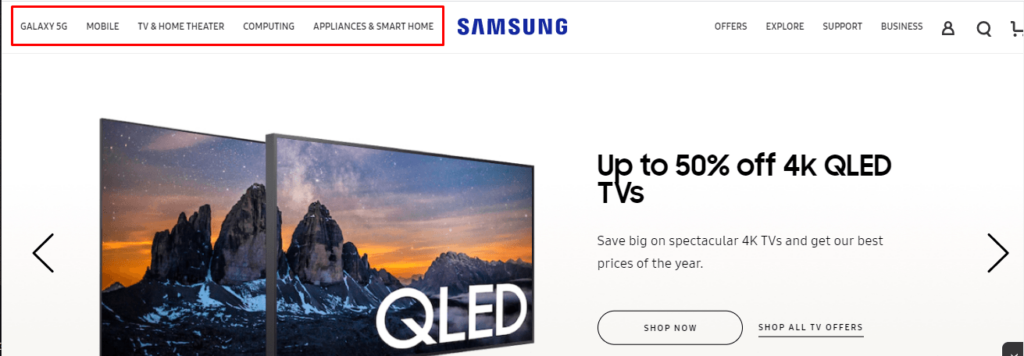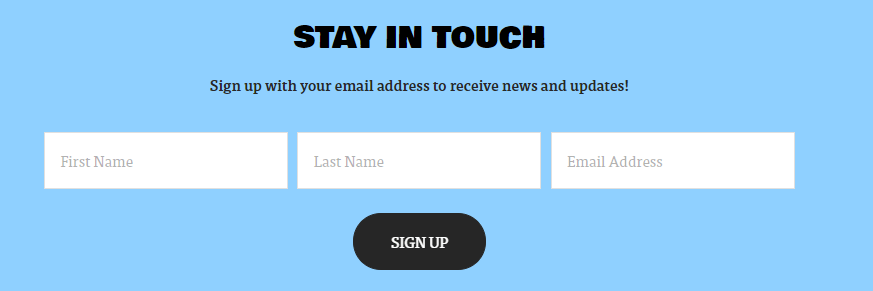- Home
- Blog
- Web Design What is Website Conversion? [+5 Ways to Improve Conversions]
What is Website Conversion? [+5 Ways to Improve Conversions]
-
 10 min. read
10 min. read
-
 Macy Storm
Macy Storm Senior Content Creator
Senior Content Creator
- Macy is a marketing writer with over five years of experience creating content for dozens of industries including food and beverage, home services, and education. She also specializes in creating SEO and PPC content. Her work has been featured by Search Engine Journal, HubSpot, Entrepreneur, Clutch, and more. In her free time, Macy enjoys trying new crafts and reading comic books.
When you’re trying to grow your business online, you must monitor vital metrics to ensure your business is growing. One important metric is your website’s conversions. Conversions help you determine if you’re driving success with your digital marketing campaigns.
So, what is website conversion?
How can you improve your website conversion rate?
Keep reading to learn more about website conversions and find five tips to improve your conversion rate! If you want to stay up to date on the latest digital marketing information, like website conversions, subscribe to Revenue Weekly!
Our digital marketing campaigns impact the metrics that improve your bottom line.
See More Results
WebFX has driven the following results for clients:
$6 billion
In client revenue
24 million
Leads for our clients
7.14 million
Client phone calls
What is a website conversion?
A website conversion happens when someone completes a pre-determined and desired action on your website, like signing up for a newsletter, sharing a blog post to social media, or buying a product. The percentage of people that complete your desired action is your conversion rate.
What are some examples of website conversions?
A few examples of website conversions include:
- Filling out a form
- Signing up for emails or information
- Sharing content to social media
- Clicking a specific button
- Making a sale
- And more
Website conversions can be any of the actions listed above.
You will determine which action fits your campaign goals the best.
Conversion types vary among businesses. Ecommerce sites are more likely to focus on earning sales as conversions. A service provider, like a plumber or electrician, may concentrate on generating leads as a conversion.
No two businesses are alike, so you may not have the same website conversions as other companies.
How do I calculate my website’s conversion rate?
After asking the question “What is website conversion?”, the next question that follows is, “How do I calculate my conversion rate?”
Luckily, it’s simple and easy to calculate your conversion rate.
The formula is as follows:
[Total visitors that convert/total visitors on your site] x100 = Conversion rate
So, let’s say you have 5000 people visit your site.
Of those 5000, 500 buy products from your page.
If you plug that into the formula, it looks like this:
[500/5000] x100 = 10%
Your website’s conversion rate would be 10% in this instance.
If you want a quick solution to calculating your conversion rate, check out our conversion rate calculator!
What is a good conversion rate?
Now that you know what a website conversion is and how to calculate your conversion rate, the next thing you want to know is what is a good conversion rate. Many businesses want to know the magic number for having a successful conversion rate.
The truth is there isn’t a magic number.
Your conversion rate will depend on numerous factors, including:
- Your industry
- Your sales cycle
- Your products/services
- Your costs
- And more
These factors influence your conversion rate, so it’s difficult to pinpoint the exact amount you need to achieve. You may need to do some research to find out what a good conversion rate is for a business in your industry.
How does the sales funnel affect website conversion rates?
When you ask, “What is conversion rate?” you’ll often hear a response that mentions the sales funnel. People will say how you need to move people through the sales funnel to earn conversions for your business.
So, how does the sales funnel influence your website conversion rate?
The sales funnel plays a vital role in turning prospects into conversions for your business.
There are four stages of the sales funnel:
- Awareness: At this stage, people are just discovering your brand and learning about you. They’ll browse your site and learn about your products or services.
- Interest: When people reach this part of the funnel, they start to consider your business as an option. They’re still researching and learning about your company, but you’ve become a viable choice.
- Desire: At the desired stage, people are ready to make their decision because they know what they need. At this point, you can make a last-minute pitch that shows them why you’re the best option.
- Action: When leads reach the action stage, they take the action you desire. Whether you want someone to buy a product or fill out a form, they reach this stage and complete that desired action.
As you can see, different parts of the sales funnel lead to people completing your ultimate action. The steps you take along the way in the earlier part of the sales cycle will influence whether people get to the “action” part.
The sales cycle is vital to your website’s conversion rate because it helps guide people towards conversion. If you want to have a good conversion rate, you must invest in nurturing people through each stage of the sales cycle.
How to increase your conversion rate
Now that you have the answer to “What is conversion rate?” you may check out your business’s website conversion rate to see where you stand.
After crunching the numbers and analyzing industry averages, you may find that your conversion rate is less than stellar.
This moment is no time to feel defeated, though!
If you have a low conversion rate, check out these five tips for improving your conversion rate:
1. Analyze how your audience interacts with your site
To create websites that convert, you must build a website that works for your audience.
If you’re experiencing a low conversion rate, it may be due to your site’s design.
User experience (UX) is a critical factor in determining why someone remains on your page or leaves. If you notice low conversion rates, it might be time to improve your web design.
By analyzing how your audience interacts with your site, you’ll see where your website falls short. You may find that the format of your page causes leads to leave or excludes a critical button that guides people to the next page.
When you analyze how people interact with your site, you’ll make improvements that help you provide a better experience for your audience.
More people will remain on your website and learn about your business, which will lead to more conversions.
2. Make the call to action (CTA) buttons pop on your site
When you have the right call to action (CTA) buttons on your site, you will increase website conversions. CTA buttons play a fundamental role in guiding users to the next step and in your conversion rate optimization (CRO) strategy. They tell your audience how to proceed and what they can expect to happen next.
If you’re struggling with your conversion rate, review your CTA buttons.
A good CTA button pops off the page.
Your audience should have zero problems locating a button on your page.
Choose a color that stands out from your website’s design and is easy for your audience to locate.  Take this CTA example from Xbox.
Take this CTA example from Xbox.
They advertise “Grand Theft Auto V” on their website, inviting visitors to play it on their consoles by buying the Xbox Game Pass. Right beneath the information, there’s a green CTA button that says, “Get It Now.”
This CTA stands out on the page and catches the user’s attention, while also fitting in with Xbox’s website design.
The CTA, “Get It Now,” tells users what will happen when they click on the button. It’s a great example of how to make a CTA that stands out and directs users. You can refer to our nine-point CRO checklist for more tips to optimize your CTA and other page elements.
3. Simplify your navigation
If you’re looking to increase website conversions on your site, you can simplify your navigation to make it easier for people to find information on your page. When people can’t find information fast, they’re less likely to remain on your site.
At least 89% of users will shop with a competitor after poor user experience. If your navigation isn’t providing users with a good experience, it could be the cause of your site’s low conversion rate.
To improve your conversion rate, focus on building simple and organized navigation.
Samsung’s website is an excellent example of clean and simple navigation.
 Samsung organizes its page based on the different types of products the company offers, such as mobile devices, TVs, and computers. If someone knows they’re looking for a TV, they can easily find that category and browse through the available products. This user-friendly navigation setup likely helps Samsung improve its ecommerce conversion rate.
Samsung organizes its page based on the different types of products the company offers, such as mobile devices, TVs, and computers. If someone knows they’re looking for a TV, they can easily find that category and browse through the available products. This user-friendly navigation setup likely helps Samsung improve its ecommerce conversion rate.
Keeping your navigation organized and straightforward will help more people find the information they need and keep them on your site longer.
4. Make your site mobile-friendly
If you want to know how to increase conversion rate, build a mobile-friendly website.
Sixty-seven percent of users are more likely to buy from a mobile-friendly company. When you combine that stat with the fact that over 40% of online transactions happen on mobile, you can see how vital a mobile-friendly site is to earn conversions.
Don’t have a mobile-friendly site? Here are a few ways to improve your site’s mobile-friendliness:
- Integrate responsive design: Responsive design ensures your website adapts to whatever device a user uses. When you use responsive design, your site will support mobile users and provide a better experience.
- Make your site thumb-friendly: When users browse on mobile devices, they use their thumb to navigate content and visit different pages. To make your site thumb-friendly, use bigger buttons, and place navigational items within the thumb’s reach.
- Use larger font sizes: When people read information from your site on a mobile device, the font must be big enough to read. Don’t use small font sizes, as your audience will struggle to read the information. You can test different font sizes to see what works best.
These are just a few best practices you can follow to make your site mobile-friendly.
By making your site mobile-friendly, you’ll keep leads on your website and make them more likely to convert.
5. Make it easy to convert
If you want to increase website conversions, you need to make it easy to convert. Don’t complicate your process with too many steps or by asking for irrelevant information. You need to make it simple for your audience to convert, so they’re more likely to act.
Is your conversion rate less than stellar?
If so, review your conversion process and see if there are ways for you to improve it. Your conversion process consists of the steps your audience takes to complete your conversion goal.
Let’s say your conversion goal is to get people to sign up for emails. After reviewing your email sign-up form, you find that many people get to the sign-up form but don’t complete it.
You may need to opt for a simpler sign-up form, like this one from the Lehigh County Humane Society.  Their form is simple and only asks for a first name, last name, and email address. It asks for enough information to start, but not too much that the form’s overwhelming.
Their form is simple and only asks for a first name, last name, and email address. It asks for enough information to start, but not too much that the form’s overwhelming.
By making it easy to convert, you’ll improve your conversion rate.
Start improving your website conversion rate today
Now that you have the answer to, “What is a website conversion?” you can start analyzing your conversion rate and strengthening your business’s performance.
Improving your conversion rate will help your company grow online and reach more leads.
Are you looking to get more website conversions? Contact us online (or give us a call at 888-601-5359) to speak with a strategist about our conversion rate optimization services.
-
 Macy is a marketing writer with over five years of experience creating content for dozens of industries including food and beverage, home services, and education. She also specializes in creating SEO and PPC content. Her work has been featured by Search Engine Journal, HubSpot, Entrepreneur, Clutch, and more. In her free time, Macy enjoys trying new crafts and reading comic books.
Macy is a marketing writer with over five years of experience creating content for dozens of industries including food and beverage, home services, and education. She also specializes in creating SEO and PPC content. Her work has been featured by Search Engine Journal, HubSpot, Entrepreneur, Clutch, and more. In her free time, Macy enjoys trying new crafts and reading comic books. -

WebFX is a full-service marketing agency with 1,100+ client reviews and a 4.9-star rating on Clutch! Find out how our expert team and revenue-accelerating tech can drive results for you! Learn more
Make estimating web design costs easy
Website design costs can be tricky to nail down. Get an instant estimate for a custom web design with our free website design cost calculator!
Try Our Free Web Design Cost Calculator
Table of Contents
- What is a Website Conversion?
- What Are Some Examples of Website Conversions?
- How Do I Calculate My Website’s Conversion Rate?
- What is a Good Conversion Rate?
- How Does the Sales Funnel Affect Website Conversion Rates?
- How to Increase Your Conversion Rate
- Start Improving Your Website Conversion Rate Today


Web Design Calculator
Use our free tool to get a free, instant quote in under 60 seconds.
View Web Design CalculatorMake estimating web design costs easy
Website design costs can be tricky to nail down. Get an instant estimate for a custom web design with our free website design cost calculator!
Try Our Free Web Design Cost Calculator





